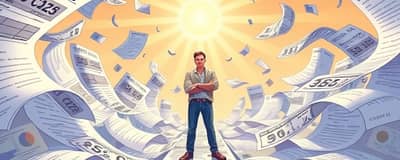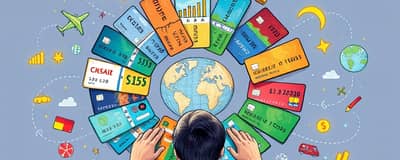In today’s complex economy, credit cards have become indispensable tools. When used wisely, they can support cash flow management, build credit history, and unlock financial opportunities.
Credit Cards: A Ubiquitous Financial Tool
Approximately 75% of American adults hold at least one personal credit card, making it a foundational part of American consumer habits. Credit card ownership varies by generation:
- Baby Boomers: 83% own a credit card.
- Millennials: 74% carry at least one card.
- Gen Xers: 72% participation.
- Gen Zers: 68% adoption.
This widespread use underscores how deeply credit has woven into everyday spending, providing convenience, fraud protection, and rewards for responsible cardholders.
The Growing Burden of Credit Card Debt
Despite these advantages, credit card balances have surged. As of Q1 2025, the average debt among cardholders stood at $7,321, up 5.8% year over year. Total U.S. credit card debt reached $1.18 trillion, slightly below the record $1.21 trillion at the end of 2024. Yet balances have risen by 51% since early 2021, driven largely by inflation and climbing interest rates.
Nearly half of cardholders now carry a month-to-month balance, and over 50% remain in debt for at least one year. This pattern creates persistent financial pressure, amplifying anxiety and reducing flexibility.
Drivers of Debt and Their Impacts
Many assume luxury purchases fuel credit card debt, but essentials are the primary drivers. Surveys indicate:
- 52% of debt stems from groceries.
- 49% covers vehicle expenses.
- 36% arises from utility bills.
- 30% relates to other household necessities.
With 77% of workers deeming debt a major problem, everyday costs can quickly become overwhelming. For lower-income households, delinquency rates have jumped by 63% since mid-2021, magnifying financial vulnerability.
Financial Wellness in the Workplace
Employers recognize that financial stress undermines productivity and morale. The U.S. financial wellness benefits market grew to $587 million in 2023 and is on pace to reach $1.21 billion by 2029, with a 12.2% CAGR. Forward-thinking companies now offer structured education and incentives—from gift cards and cashback rewards to dedicated debt management workshops—to help employees regain control.
Programs that integrate budgeting tools, peer support, and personalized guidance have proven effective. Participants who leverage personal financial management tools consistently are 176% more likely to sustain healthy money habits over the long term.
Best Practices for Using Credit Cards to Enhance Wellness
To transform credit cards into engines of financial health, adopt these proven strategies:
- Establish and adhere to a realistic budget each month.
- Pay off balances in full whenever possible to avoid interest charges.
- Prioritize repayment of high-interest debt first.
- Build an emergency savings fund to reduce reliance on credit.
- Monitor and connect all financial accounts for clear oversight.
Applying these techniques converts plastic into tools for long-term financial growth, reducing stress and reinforcing positive spending habits.
Challenges and Opportunities Ahead
Persistent inflation, rising interest rates, and inadequate savings continue to drive consumers toward revolving credit. National delinquency rates, though slightly improved from their peaks, remain elevated among disadvantaged households.
Yet opportunities abound. Proper credit card use can foster credit-building through consistent payments, unlock valuable rewards that offset costs, and provide enhanced buyer protection. By reframing credit cards as strategic allies rather than pitfalls, individuals can leverage every swipe as a step toward resilience.
Looking Forward: Building Financial Confidence
The journey to financial wellness blends practical tactics with a resilient mindset. Embracing disciplined habits, ongoing education, and prudent credit use empowers individuals to weather economic uncertainties and build lasting security. Through informed decision-making and disciplined habits, every cardholder can convert potential debt traps into gateways for sustained prosperity and peace of mind.














